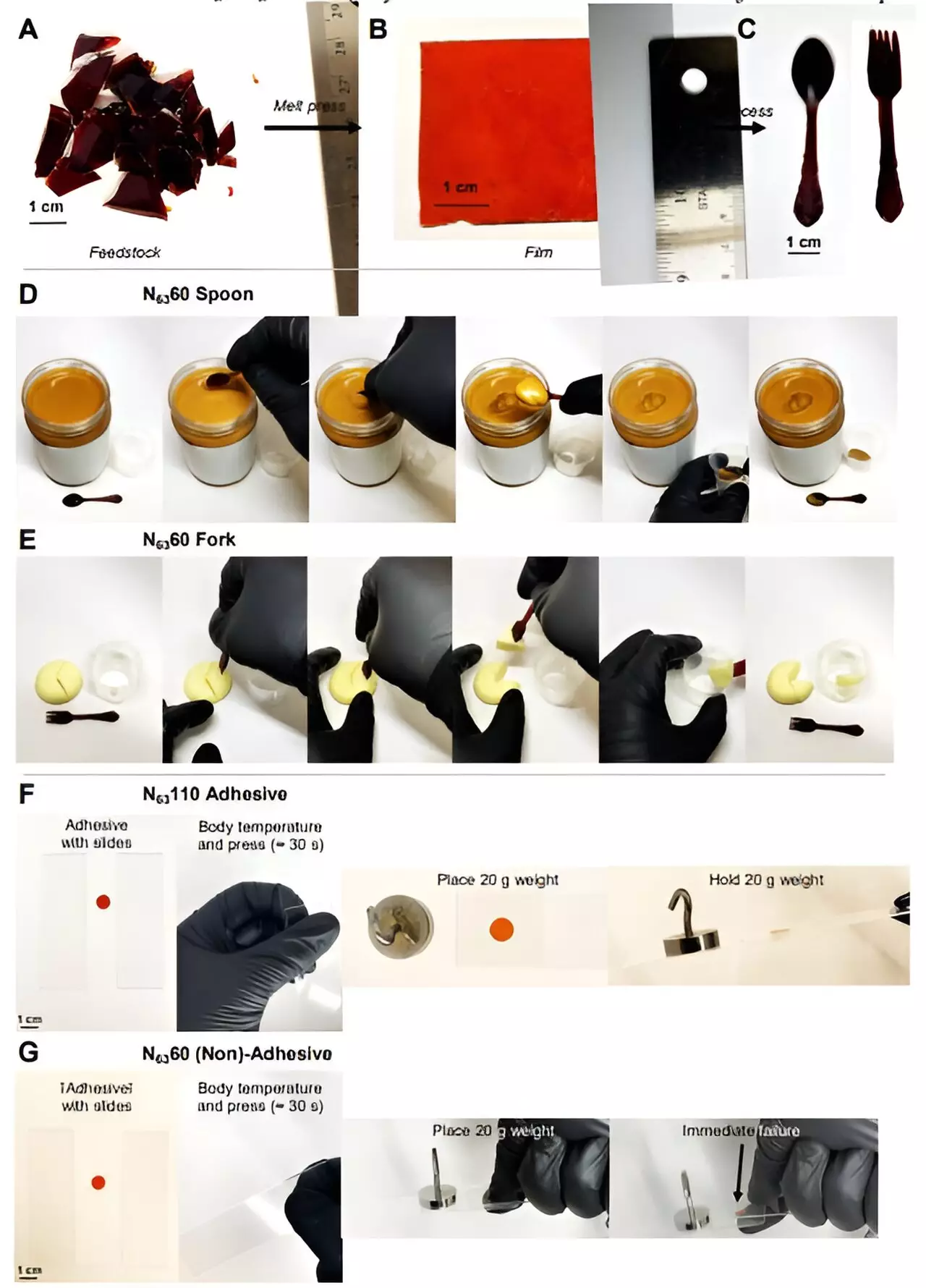Plastics have become a significant cause of concern due to their detrimental effects on the environment and human health. From soil to oceans and even the human body, plastic pollution has permeated every facet of our lives. Consequently, scientists worldwide have intensified their efforts to minimize plastic production and its subsequent disposal. In a groundbreaking study published in the prestigious journal Science, a team of molecular engineers from the University of Chicago, in collaboration with researchers from the US DEVCOM Army Research Laboratory, Aberdeen Proving Ground, the National Institutes of Standards and Technology, and the NASA Glenn Research Center, have successfully developed a type of plastic that could be the solution we have been longing for.
The scientific team focused on creating a plastic that could be repurposed once it had fulfilled its initial function. By employing a process known as tempering, they unlocked the potential to transform everyday objects, such as a plastic bag used for food storage, into entirely new forms like spoons or forks. The key to this shape-shifting plastic lies in a dynamic cross-linked approach utilizing the reversible addition of thiols to benzalcyanoacetates, more commonly referred to as a “Michael addition.” Essentially, the researchers developed a plastic material that could undergo modification through tempering—a technique primarily associated with metalwork.
Heating the plastic between temperatures of 60°C and 110°C, followed by swift cooling in a conventional food freezer, allowed the material to take on different forms based on the researchers’ preferences. In their experiments, the team first transformed the plastic into a spoon, which they successfully used to scoop peanut butter from a jar. Through subsequent tempering, the spoon morphed into a fork, and then remarkably transformed into an adhesive material capable of holding two panes of glass together. This breakthrough showcases the immense potential of the shape-shifting plastic and its wide applicability for various purposes.
Although the shape-shifting plastic exhibited remarkable versatility and adaptability, it displayed limitations in terms of the number of transformations it could undergo. After seven cycles of tempering, the plastic began to degrade, ultimately affecting its structural integrity and performance. However, this limitation should not overshadow the extensive possibilities and positive implications that this breakthrough brings to the table in terms of sustainability and waste reduction.
The development of shape-shifting plastic represents an exciting leap forward in our quest for sustainable and eco-friendly materials. Through the innovative use of tempering and a dynamic cross-linked approach, these molecular engineers have opened up a world of possibilities for transforming plastic waste into valuable products. While further research is necessary to address the material’s limitations, this breakthrough holds immense promise for revolutionizing the plastic industry, reducing environmental pollution, and promoting a healthier future for both our planet and ourselves.


Leave a Reply